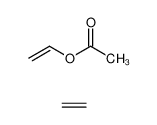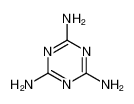| Product name | magnesium atom |
|---|
| Product number | - |
|---|---|
| Other names | UNII-I38ZP9992A |
| Identified uses | For industry use only. Intermediates |
|---|---|
| Uses advised against | no data available |
| Company | MOLBASE (Shanghai) Biotechnology Co., Ltd. |
|---|---|
| Address | Floor 4 & 5, Building 12, No. 1001 North Qinzhou Road, Xuhui District, Shanghai, China |
| Telephone | +86(21)64956998 |
| Fax | +86(21)54365166 |
| Emergency phone number | +86-400-6021-666 |
|---|---|
| Service hours | Monday to Friday, 9am-5pm (Standard time zone: UTC/GMT +8 hours). |
no data available
2.2 GHS label elements, including precautionary statements| Pictogram(s) | no data available |
|---|---|
| Signal word | no data available |
| Hazard statement(s) | no data available |
| Precautionary statement(s) | |
| Prevention | no data available |
| Response | no data available |
| Storage | no data available |
| Disposal | no data available |
no data available
3.Composition/information on ingredients 3.1 Substances| Chemical name | Common names and synonyms | CAS number | EC number | Concentration |
|---|---|---|---|---|
| magnesium atom | magnesium atom | 7439-95-4 | none | 100% |
Consult a physician. Show this safety data sheet to the doctor in attendance.
If inhaledFresh air, rest.
In case of skin contactRemove contaminated clothes. Rinse skin with plenty of water or shower.
In case of eye contactFirst rinse with plenty of water for several minutes (remove contact lenses if easily possible), then refer for medical attention.
If swallowedRinse mouth.
4.2 Most important symptoms/effects, acute and delayedDust irritates eyes in same way as any foreign material. Penetration of skin by fragments of metal is likely to produce local irritation, blisters, and ulcers which may become infected. (USCG, 1999)
4.3 Indication of immediate medical attention and special treatment needed, if necessaryMagnesium toxicity can be counteracted with calcium infusion.
5.Fire-fighting measures 5.1 Extinguishing media Suitable extinguishing mediaBurning of magnesium cannot be extinguished with water, carbon dioxide, halons or nitrogen ..., and more important, if these agents are used in fire-fighting, the hazardous situation will become even more severe. The only agents that can be applied successfully are the noble gases or in some cases boron trifluoride.
5.2 Specific hazards arising from the chemicalBehavior in Fire: Forms dense white smoke. Flame is very bright. (USCG, 1999)
5.3 Special protective actions for fire-fightersWear self-contained breathing apparatus for firefighting if necessary.
6.Accidental release measures 6.1 Personal precautions, protective equipment and emergency proceduresUse personal protective equipment. Avoid dust formation. Avoid breathing vapours, mist or gas. Ensure adequate ventilation. Evacuate personnel to safe areas. Avoid breathing dust. For personal protection see section 8.
6.2 Environmental precautionsRemove all ignition sources. Consult an expert! Personal protection: particulate filter respirator adapted to the airborne concentration of the substance. Sweep spilled substance into covered dry containers. Carefully collect remainder. Then store and dispose of according to local regulations. Do NOT wash away into sewer.
6.3 Methods and materials for containment and cleaning upPick up and arrange disposal. Sweep up and shovel. Keep in suitable, closed containers for disposal.
7.Handling and storage 7.1 Precautions for safe handlingAvoid contact with skin and eyes. Avoid formation of dust and aerosols. Avoid exposure - obtain special instructions before use.Provide appropriate exhaust ventilation at places where dust is formed. For precautions see section 2.2.
7.2 Conditions for safe storage, including any incompatibilitiesFireproof. Dry. Well closed. Separated from other incompatible materials.Detached storage must be used for finely divided materials. Must be stored in a dry location. Isolate from halogens, acids, and oxidizing materials.
8.Exposure controls/personal protection 8.1 Control parameters Occupational Exposure limit valuesno data available
Biological limit valuesno data available
8.2 Appropriate engineering controlsHandle in accordance with good industrial hygiene and safety practice. Wash hands before breaks and at the end of workday.
8.3 Individual protection measures, such as personal protective equipment (PPE) Eye/face protectionSafety glasses with side-shields conforming to EN166. Use equipment for eye protection tested and approved under appropriate government standards such as NIOSH (US) or EN 166(EU).
Skin protectionWear impervious clothing. The type of protective equipment must be selected according to the concentration and amount of the dangerous substance at the specific workplace. Handle with gloves. Gloves must be inspected prior to use. Use proper glove removal technique(without touching glove's outer surface) to avoid skin contact with this product. Dispose of contaminated gloves after use in accordance with applicable laws and good laboratory practices. Wash and dry hands. The selected protective gloves have to satisfy the specifications of EU Directive 89/686/EEC and the standard EN 374 derived from it.
Respiratory protectionWear dust mask when handling large quantities.
Thermal hazardsno data available
9.Physical and chemical properties| Physical state | silver or grey rod, turnings or ribbon |
|---|---|
| Colour | Silvery-white metal |
| Odour | none |
| Melting point/ freezing point | 651ºC |
| Boiling point or initial boiling point and boiling range | 1090°C(lit.) |
| Flammability | Highly flammable. Gives off irritating or toxic fumes (or gases) in a fire. |
| Lower and upper explosion limit / flammability limit | no data available |
| Flash point | 500ºC |
| Auto-ignition temperature | 510°C |
| Decomposition temperature | no data available |
| pH | no data available |
| Kinematic viscosity | 1.25 cP @ melting point |
| Solubility | INSOL IN COLD WATER, CHROMIUM TRIOXIDES; SOLUBLE IN MINERAL ACIDS |
| Partition coefficient n-octanol/water (log value) | no data available |
| Vapour pressure | 1 Pa @ 428°C |
| Density and/or relative density | 1.74g/mLat 25°C(lit.) |
| Relative vapour density | 0.84 |
| Particle characteristics | no data available |
no data available
10.2 Chemical stabilitySLOWLY OXIDIZES IN MOIST AIR.
10.3 Possibility of hazardous reactionsMAGNESIUM FIRE: DO NOT FLARE UP VIOLENTLY UNLESS...MOISTURE PRESENT. DANGEROUS IN FORM OF DUST OR FLAKES, WHEN EXPOSED TO FLAME OR BY VIOLENT CHEM REACTION WITH OXIDIZING AGENTS. ...SOLID FORM IS DIFFICULT TO IGNITE...IT MUST BE HEATED ABOVE ITS MELTING POINT... FINELY DIVIDED FORM...MAY BE IGNITED BY SPARK OR FLAME...OR EVEN SPONTANEOUSLY WHEN...DAMP, PARTICULARLY WITH WATER-OIL EMULSION. DURING MACHINING, MAGNESIUM FIRES RESULT FROM USE OF DULL CUTTING TOOLS, MACHINING WITH LIGHT CUT AT HIGH SPEEDS OR RUBBING OF TOOL ON WORK AFTER CUTTING OPERATION IS FINISHED.Dust explosion possible if in powder or granular form, mixed with air. If dry, it can be charged electrostatically by swirling, pneumatic transport, pouring, etc.MAGNESIUM slowly oxidizes in moist air. Reacts very slowly with water at ordinary temperatures, less slowly at 100°C. Reacts with aqueous solutions of dilute acids with liberation of hydrogen [Merck 11th ed. 1989]. In the presence of carbon, the combination of chlorine trifluoride with aluminum, copper, lead, magnesium, silver, tin, or zinc results in a violent reaction [Mellor 2, Supp. 1. 1956]. A mixture of powdered magnesium with trichloroethylene or with carbon tetrachloride will flash or spark under heavy impact [ASESB Pot. Incid, 39. 1968]. Stannic oxide, heated with magnesium explodes [Mellor 7:401. 1946-47]. When carbon dioxide gas is passed over a mixture of powdered magnesium and sodium peroxide, the mixture exploded [Mellor 2:490. 1946-47]. Powdered magnesium plus potassium (or sodium) perchlorate is a friction-sensitive mixture [Safety Eng. Reports. 1947]. An explosion occurred during heating of a mixture of potassium chlorate and magnesium [Chem. Eng. News 14:451. 1936]. Powdered magnesium can decompose performic acid violently [Berichte 48:1139. 1915]. A mixture of finely divided magnesium and nitric acid is explosive [Pieters 1957. p. 28]. Magnesium exposed to moist fluorine or chlorine is spontaneously flammable [Mellor 4:267. 1946-47].
10.4 Conditions to avoidno data available
10.5 Incompatible materialsIncompatible with ethylene oxide, metal oxosalts, oxidants, and potassium carbonate.
10.6 Hazardous decomposition productsViolent decomposition with evolution of hydrogen chloride can occur when 1,1,1-trichloroethane comes into contact with magnesium or its alloys with aluminum.
11.Toxicological information Acute toxicity- Oral: no data available
- Inhalation: no data available
- Dermal: no data available
no data available
Serious eye damage/irritationno data available
Respiratory or skin sensitizationno data available
Germ cell mutagenicityno data available
Carcinogenicityno data available
Reproductive toxicityno data available
STOT-single exposureno data available
STOT-repeated exposureno data available
Aspiration hazardno data available
12.Ecological information 12.1 Toxicity- Toxicity to fish: no data available
- Toxicity to daphnia and other aquatic invertebrates: no data available
- Toxicity to algae: no data available
- Toxicity to microorganisms: no data available
no data available
12.3 Bioaccumulative potentialno data available
12.4 Mobility in soilno data available
12.5 Other adverse effectsno data available
13.Disposal considerations 13.1 Disposal methods ProductThe material can be disposed of by removal to a licensed chemical destruction plant or by controlled incineration with flue gas scrubbing. Do not contaminate water, foodstuffs, feed or seed by storage or disposal. Do not discharge to sewer systems.
Contaminated packagingContainers can be triply rinsed (or equivalent) and offered for recycling or reconditioning. Alternatively, the packaging can be punctured to make it unusable for other purposes and then be disposed of in a sanitary landfill. Controlled incineration with flue gas scrubbing is possible for combustible packaging materials.
14.Transport information 14.1 UN Number| ADR/RID: UN1869 | IMDG: UN1869 | IATA: UN1869 |
| ADR/RID: MAGNESIUM or MAGNESIUM ALLOYS with more than 50% magnesium in pellets, turnings or ribbons |
| IMDG: MAGNESIUM or MAGNESIUM ALLOYS with more than 50% magnesium in pellets, turnings or ribbons |
| IATA: MAGNESIUM or MAGNESIUM ALLOYS with more than 50% magnesium in pellets, turnings or ribbons |
| ADR/RID: Not dangerous goods. | IMDG: Not dangerous goods. | IATA: Not dangerous goods. |
| ADR/RID: Not dangerous goods. | IMDG: Not dangerous goods. | IATA: Not dangerous goods. |
| ADR/RID: no | IMDG: no | IATA: no |
no data available
14.7 Transport in bulk according to Annex II of MARPOL 73/78 and the IBC Codeno data available
15.Regulatory information 15.1 Safety, health and environmental regulations specific for the product in question| Chemical name | Common names and synonyms | CAS number | EC number |
|---|---|---|---|
| magnesium atom | magnesium atom | 7439-95-4 | none |
| European Inventory of Existing Commercial Chemical Substances (EINECS) | Listed. | ||
| EC Inventory | Listed. | ||
| United States Toxic Substances Control Act (TSCA) Inventory | Listed. | ||
| China Catalog of Hazardous chemicals 2015 | Listed. | ||
| New Zealand Inventory of Chemicals (NZIoC) | Listed. | ||
| Philippines Inventory of Chemicals and Chemical Substances (PICCS) | Listed. | ||
| Vietnam National Chemical Inventory | Listed. | ||
| Chinese Chemical Inventory of Existing Chemical Substances (China IECSC) | Listed. | ||
| Creation Date | Aug 16, 2017 |
|---|---|
| Revision Date | Aug 16, 2017 |
- CAS: Chemical Abstracts Service
- ADR: European Agreement concerning the International Carriage of Dangerous Goods by Road
- RID: Regulation concerning the International Carriage of Dangerous Goods by Rail
- IMDG: International Maritime Dangerous Goods
- IATA: International Air Transportation Association
- TWA: Time Weighted Average
- STEL: Short term exposure limit
- LC50: Lethal Concentration 50%
- LD50: Lethal Dose 50%
- EC50: Effective Concentration 50%
- IPCS - The International Chemical Safety Cards (ICSC), website: http://www.ilo.org/dyn/icsc/showcard.home
- HSDB - Hazardous Substances Data Bank, website: https://toxnet.nlm.nih.gov/newtoxnet/hsdb.htm
- IARC - International Agency for Research on Cancer, website: http://www.iarc.fr/
- eChemPortal - The Global Portal to Information on Chemical Substances by OECD, website: http://www.echemportal.org/echemportal/index?pageID=0&request_locale=en
- CAMEO Chemicals, website: http://cameochemicals.noaa.gov/search/simple
- ChemIDplus, website: http://chem.sis.nlm.nih.gov/chemidplus/chemidlite.jsp
- ERG - Emergency Response Guidebook by U.S. Department of Transportation, website: http://www.phmsa.dot.gov/hazmat/library/erg
- Germany GESTIS-database on hazard substance, website: http://www.dguv.de/ifa/gestis/gestis-stoffdatenbank/index-2.jsp
- ECHA - European Chemicals Agency, website: https://echa.europa.eu/


























